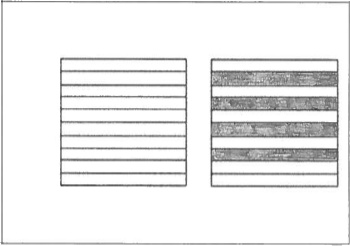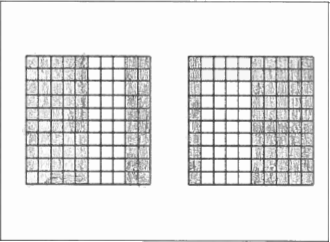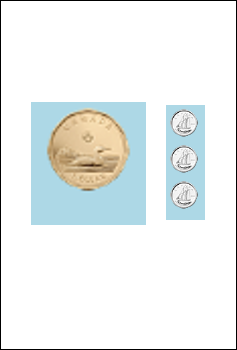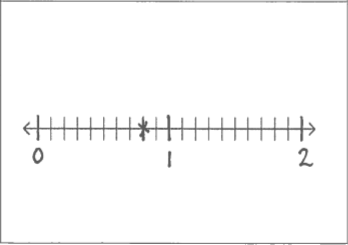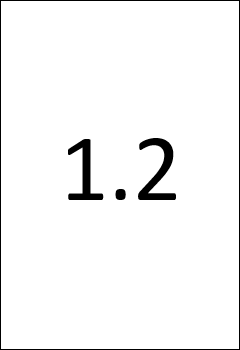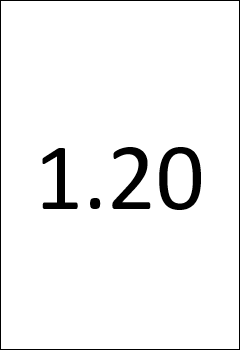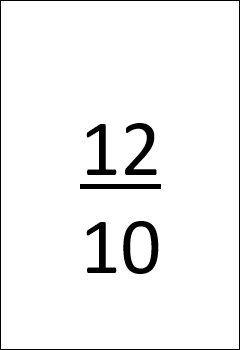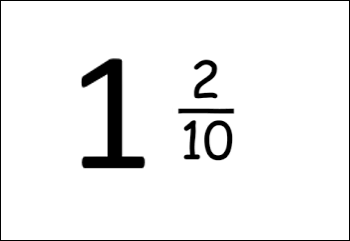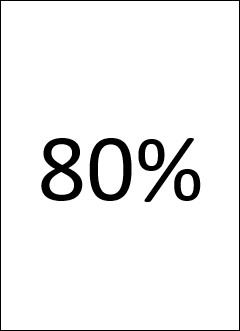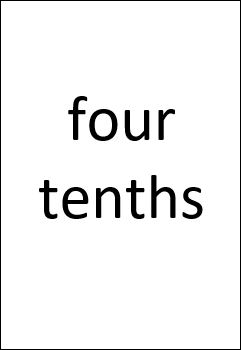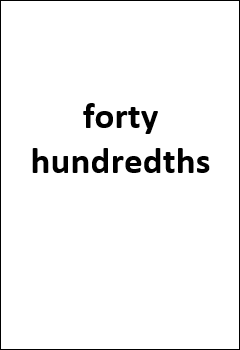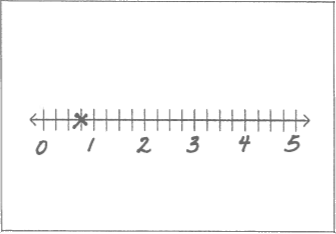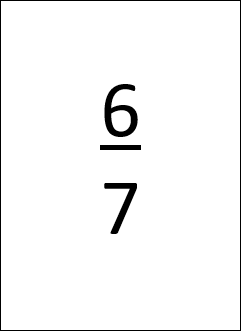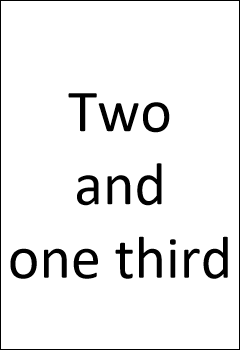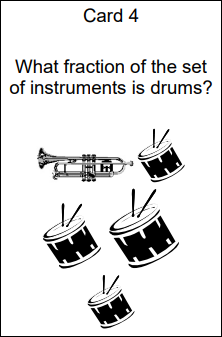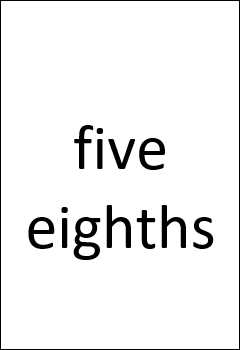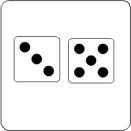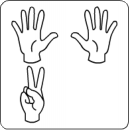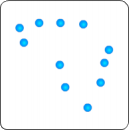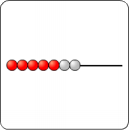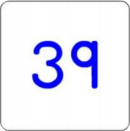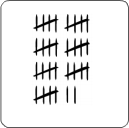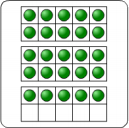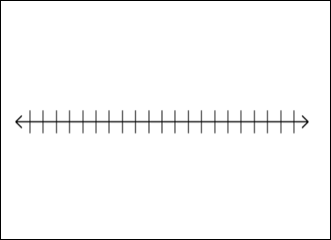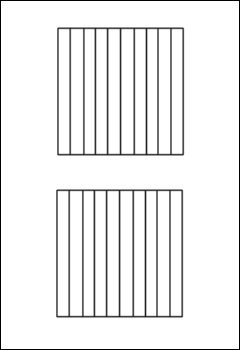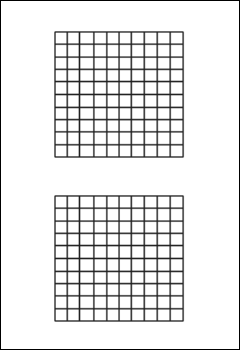Version française de cette page
Contents
Fundamental Math Concepts and Skills
Activities
Teacher Moves
Card Decks
Acknowledgements
Fundamental Math Concepts and Skills
The representation cards and suggested activities found on this page provide opportunities for students to work with whole numbers, fractions and/or decimals in a variety of ways. Activities are designed to foster number sense skills such as reading, representing, counting, comparing, ordering, understanding quantities and relationships, composing and decomposing numbers (understanding math facts and operations). As students complete tasks using the representation cards, they develop an understanding of the connections between various representations of the same quantity. (
Focusing on the Fundamentals of Math)
Activities
Matching Games
- Lay the cards out face up. Working in pairs, students take turns finding matching pairs. Each player explains why the pair they chose is a match.
- Lay the cards out face down which adds a memory component to the game. Players take turns flipping the cards to find matching pairs. When the player finds a pair, they take another turn. If the cards do not match, turn them face down.
- Play one of the Representation Games found on mathies Games.
- Play "Go Fish".
Magnitude Games
-
- Shuffle the deck and deal the cards evenly between players.
- Without looking at the cards, each player places their portion of the deck face down in a pile in front of them.
- Each round consists of all players each flipping one card over.
- The player that flips the card with the greatest value wins all of the cards flipped in that round.
- Ties are broken by playing another round.
- The winner is the player with the most cards at the end of the game.
- Order the cards from least to greatest.
- Place each card at the appropriate spot on a number line.
Start by placing anchor values (e.g., 0 and 1 when working with fraction cards).
Working on a number line involves proportional reasoning skills as well as the ability to order values.
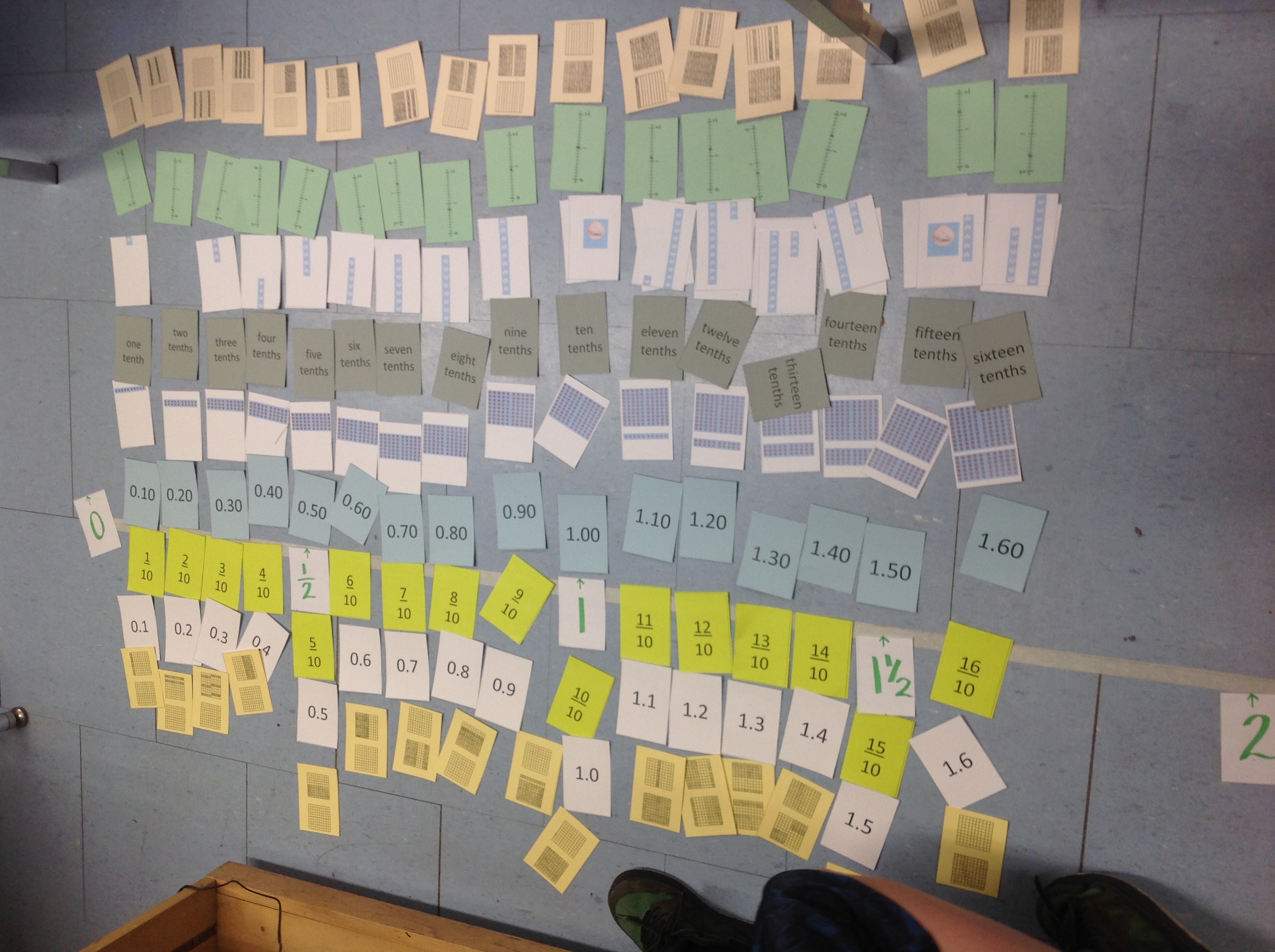
|
Grand Erie Students Engaged in Ordering on a Number Line
Photo courtesy of Beth Edwards
|
- Race to the Finish. Choose a target value for the finish line. The chosen target depends on the type of cards you are working with (e.g., 10, 100 or 1.0). Each student uses a large segmented number line with the target marked. Take turns choosing a card and moving that many units towards the target.
- Flip the top card in the deck. This card is the anchor. Flip each of the other cards one at a time and decide whether the card is less than, greater than or equal to the anchor value.
top
Flash Card Tasks
- Say the name of the number.
- Say a number that is greater than or less than the number on the flash card.
- For fraction or decimal cards:
- Say a number that is equivalent to the given value.
- Say how many unit parts are needed to make one whole. (unshaded parts)
- Say the math fact that makes one whole. Share how the representation helps to see the fact.
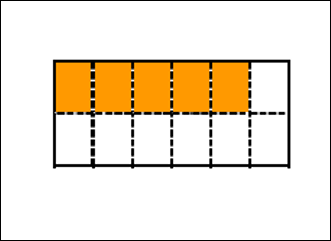
e.g., This card shows the fraction 5/12 shaded in orange.
It also shows 7/12 of the rectangle in white.
So, one possible math fact would be 5/12 + 7/12 = 1
- For whole number cards:
- For single digit cards, say how many are needed to make 10.
- For two digit cards, state the number of tens and ones that make up the number.
- State a math fact that uses the given value.
Representing Tasks
- Choose a card from the pile. Represent the value in other ways.
Representations can be drawn by hand or created using concrete or digital manipulatives (e.g., mathies tools). Representations could be displayed using a concept circle or other graphic organizer.
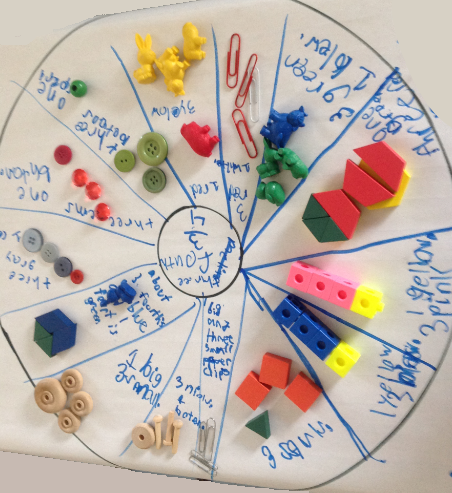
|
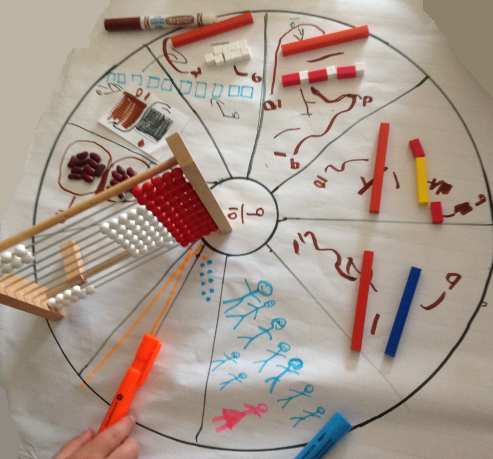
|
Concept Circle showing Representations of Three-fourths
Photo courtesy of Beth Edwards, Grand Erie DSB
|
Concept Circle showing Representations of Nine-tenths
Photo courtesy of Beth Edwards, Grand Erie DSB
|
- Choose a number word card. Create cards that represent this number in different ways.
- Choose a number that is not currently in the deck of cards. Create representation cards to add to the deck(s).
Student may wish to use the
blank cards provided below for these representation tasks.
Reading, Naming and Counting Tasks
- Choose a card. Say the name of the number and how you know.
- For fraction cards:
- Name the unit fraction.
- Name an equivalent fraction.
- “Count up” using the unit fraction
- For whole number cards, skip count by the value shown on the card.
top
Teacher Moves
As students play the various games, teachers:
- Encourage students to explain their thinking to each other as they play.
- Listen to the discussion to find out what understandings, partial understanding or misunderstanding students may hold.
- Look for opportunities to encourage students to question, discuss, challenge and prove.
Differentiation Ideas
- Change the number of decks (kinds of representations) that students are working with.
- Use selected cards from each deck. e.g., include only the cards showing halves or fourths.
- Provide choice by using different activities at different centres.
Suggestion: Print each deck on a different colour of cardstock paper for ease of separation.
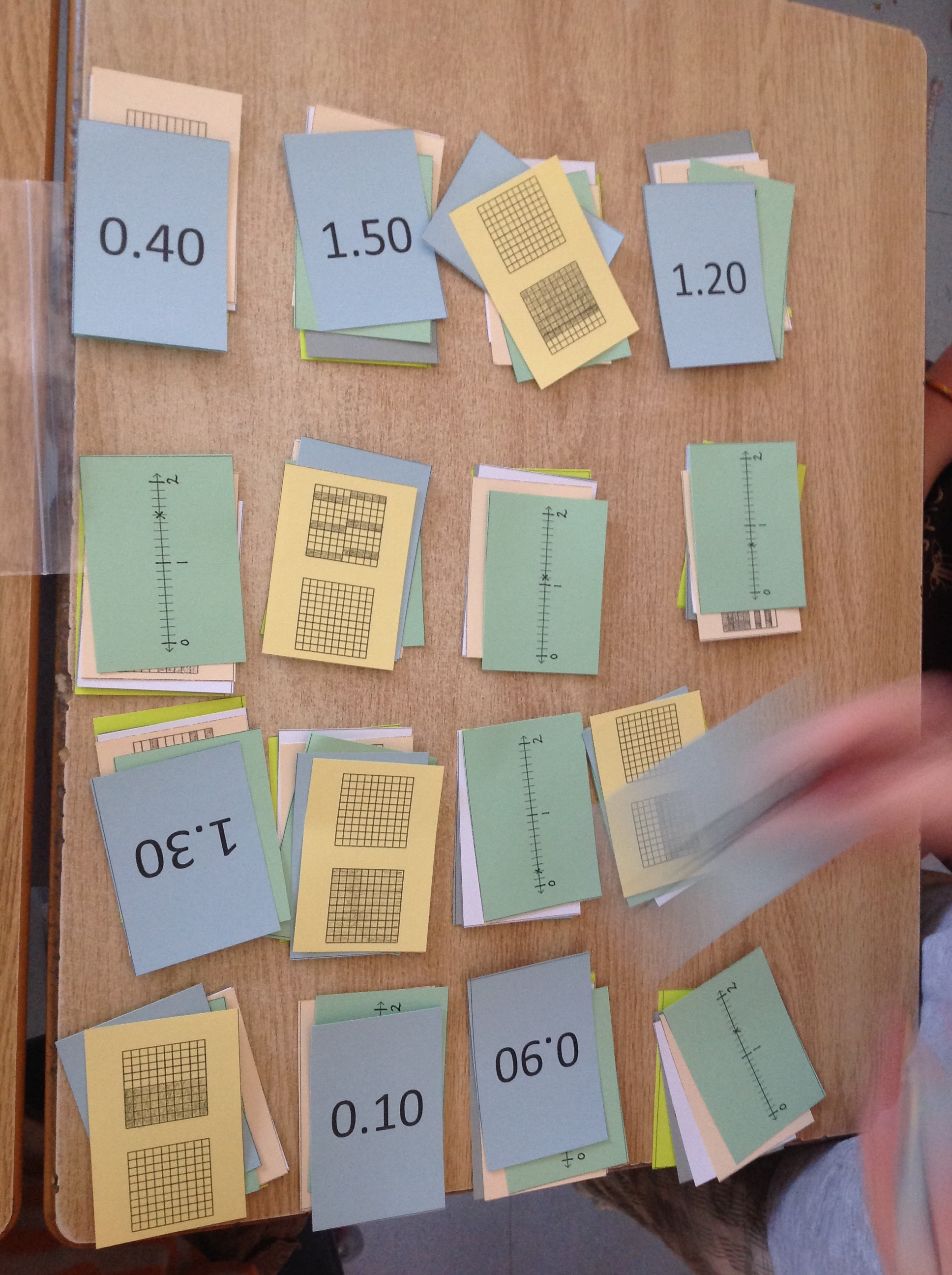
|
Grade 4 Students Engaged in a Matching Activity
Photo courtesy of Beth Edwards
|
top
Card Decks
Each deck of cards provides a certain type of representation for the same set of values.
Beth Edwards provided a revised set of
all the decimal and fraction cards in one document, June 2019.
Decimal Cards
top
Fraction Cards
Set #1: - proper, improper and mixed fractions
(Inspired by the
Desktop Fraction Activity)
top
Set #2: - proper fractions
(Inspired by the mathies Fraction Card Game)
Note:
The fraction number line cards have a whole that varies in length from card to card. These cards are good for understanding the part-whole relationship.
If the goal is to compare fractions, it might be better to create a set of number line cards where the whole is a consistent length. This would be a good exercise for students.
top
Whole Number Cards
Note: These cards are also used for some of the
Working in Number Sense (WINS) activities.
top
Make Your Own Cards
Students can also create and play their own card game.
Here are some blank cards to help get started.
top
Acknowledgements
*Ontario Ministry of Education. (2017). BLM 1 of the Desktop Fractions (Unit B) in the Fractions Learning Pathways.
**Card decks created by Beth Edwards, Junior Division Teacher Consultant, Grand Erie District School Board.
Beth has been working in Grade 3,4,5 classrooms to help students make connections between various fraction and decimal representations.
She used both the Fraction Card Game found on the mathies Games page as well as the Desktop Fractions Cards from the Fractions Learning Pathways (Unit B). For each set of cards, Beth added additional representations (e.g., words, number lines, percent, etc.) that she wanted to use with students. She also created some blank cards so that students could create their own cards. Beth says, "The students loved working with the cards."
She recommends printing each deck on a different colour of cardstock for ease of separating. Thanks for sharing Beth!





